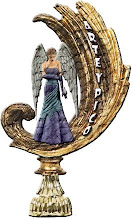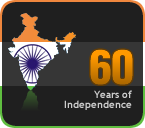Continued from previous post .. . . .
The bride waiting at the pandal welcomes the bridegroom with a garland, and he in his turn, garlands the bride.
In those days, since both the bride and the groom were children, the maternal uncles came forward to lift them on their shoulders. Sitting on the shoulders, the bride and the groom exchanged garland three times. This way everybody present could see them well and proper exchanging garlands. The uncles had more fun ducking and withdrawing to make it difficult for them to garland each other.
After getting down from the uncle’s shoulders, they were asked to hold hands and led to a flower decorated oonjal (swing). Here the priest got a chance to show off his musical prowess by singing the first oonjal song, and making way for the ladies to continue the singing.
After each song, the nadaswaram player played the song faithfully on his instrument. This usually used to go on for half an hour or so. After this the couple was fed with banana pieces soaked in milk by the elderly Sumangali women. This was followed by the 'pachapdi sutthal' to ward off all evil eyes. The rice balls used for this are made with cooked rice mixed with turmeric powder and lime, giving it a red colour.
The most important part of the wedding is the ‘kanniga danam’ – giving away the bride. The bride’s father sat on a small bale of hay, with his daughter on his lap. She held betel leaves, a coconut and betel nuts in her cupped palms. The priests from both sides recited the lineage of the bride and the groom for three generations – the great grandfather, grandfather and father, along with the gothram thrice. This is a very touching moment, with the nadaswaram falling silent as well as the people. This was the moment when the bride entered the bridegroom’s gothram. The bride was then given away by her parents to the groom to be under his care, to the chanting of mantras.
Next came the presenting of the 'koorai pudavai', the traditional nine yard saree, the main wedding saree to the bride by the groom.
While she went in to change into her new saree with the help of the groom's sister and other ladies, the bridegroom was seated on the same bale of hay (today the chair has taken its place), and the bride’s father washed his feet with the water being poured by her mother.
This was how the guest was received traditionally into the house by the host. The bride entered wearing the new saree with her sister-in-law, looking beautiful and looking forward to a happy life She was seated again on her father’s lap, who now sat on the bale of hay. While the priests chanted mantrams, the bridegroom placed a small yoke on her head, symbolizing that they would have to work together for the success of the marriage. And after this the bridegroom tied the mangalasutra, or thirumangalyam threaded on yellow thread, round her neck. The first two knots were tied by him and the third knot by his sister.
The nadaswaram then went into what is called 'getti melam', playing rapid notes at a high pitch, and the thavil playing loudly to a vigorous beat, while flowers were showered onto the new couple. Sugar and candy sugar were distributed to everyone to celebrate. Members of the bridegroom’s family were given thamboolam with coconut.
Now the bridegroom held the bride’s right hand with his right hand, took the marriage vows, praying to Agni, God of fire, and other gods to bless them with long life and prosperity.
The bridegroom now held the right big toe of the bride and thus walked seven steps all the while chanting the mantram which said she had become his friend and companion, and would remain together for life. This is known as the 'sapthapathi', the actual point at which they are truly wedded.
Next, the couple sat in front of the holy fire, while the priest chanted mantras which the groom repeated. The bride’s brother helped him to offer ‘pori’ (puffed rice) to the homam, signifying that the brother would take care of the bride, if the need arose.
‘Odhi idal’, is an important occasion giving gifts to the wedding couple by the various aunts and uncles on both sides. The priests invoking the blessings of the gods, handed over the gifts to the bride or the groom, naming the giver and the amount, for usually the gifts were in cash. Coins of Rupee one and two denominations were gifted, because they were minted in pure silver. Nobody wanted their names to be left out. Even today this system is carried out in families who follow tradition completely.
After that it was time for ‘aseervadam’, blessings, with the chanting of the mantrams, all elders showered yellow rice on the couple, praying for their long life together.
Two ladies now took arathi to signify that the muhurtham was over. The bride and groom went around performing namaskaram (obeisance seeking blessings) to all senior relatives individually, one by one, unlike today , when it is usual a sabha namaskaram, a single one for all.
More to come. . .
Subscribe to:
Post Comments (Atom)











2 comments:
How lovely to read about all these traditions and the reasons for them, especially since today so many of them are dispensed with, and people don't really know why they are doing what they are. As always, the pictures were such a treat to look at - brought back the old days!
What an honour Ma to be featured in your blog . The delighted grin has not left Venky's face ever since he saw the post !!!
Post a Comment